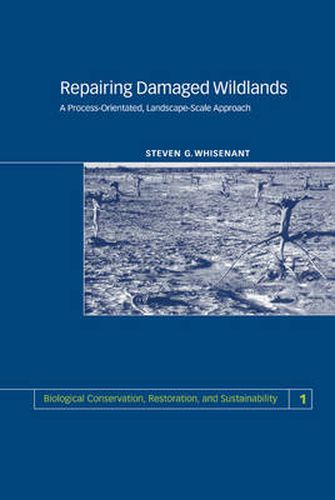Readings Newsletter
Become a Readings Member to make your shopping experience even easier.
Sign in or sign up for free!
You’re not far away from qualifying for FREE standard shipping within Australia
You’ve qualified for FREE standard shipping within Australia
The cart is loading…






The unique approach to ecological restoration described in this book will appeal to anyone interested in improving the ecological conditions, biological diversity, or productivity of damaged wildlands. Using sound ecological principles, the author describes how these ecosystems are stabilised and directed toward realistic management objectives using natural recovery processes rather than expensive subsidies. An initial emphasis on repairing water and nutrient cycles, and increasing energy capture, will initiate and direct positive feedback repair systems that drive continuing autogenic recovery. This strategy is most appropriate where landuse goals call for low-input, sustainable vegetation managed for biological diversity, livestock production, timber production, wildlife habitat, watershed management, or ecosystem services. No other book provides such a comprehensive strategy for the ecological restoration of any wildland ecosystem, making this an invaluable resource for professionals working in the fields of ecological restoration, conservation biology and rangeland management.
$9.00 standard shipping within Australia
FREE standard shipping within Australia for orders over $100.00
Express & International shipping calculated at checkout
Stock availability can be subject to change without notice. We recommend calling the shop or contacting our online team to check availability of low stock items. Please see our Shopping Online page for more details.
The unique approach to ecological restoration described in this book will appeal to anyone interested in improving the ecological conditions, biological diversity, or productivity of damaged wildlands. Using sound ecological principles, the author describes how these ecosystems are stabilised and directed toward realistic management objectives using natural recovery processes rather than expensive subsidies. An initial emphasis on repairing water and nutrient cycles, and increasing energy capture, will initiate and direct positive feedback repair systems that drive continuing autogenic recovery. This strategy is most appropriate where landuse goals call for low-input, sustainable vegetation managed for biological diversity, livestock production, timber production, wildlife habitat, watershed management, or ecosystem services. No other book provides such a comprehensive strategy for the ecological restoration of any wildland ecosystem, making this an invaluable resource for professionals working in the fields of ecological restoration, conservation biology and rangeland management.